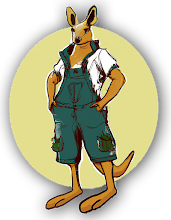This was hard!
Not being a teacher, I had no experience or education from which to draw on what constitutes a successful lesson plan, much less what constitutes a successful Universal Design for Learning (UDL) lesson plan.
As I complete the third week of the third class of my master's degree, I can say with certainty that this has been my toughest week yet. It is stereotypical of what you would believe a master's degree class would be like. A lot of reading, collaborating with a group of fellow students you barely know, and striving to create a project that doesn't make you look like an idiot.
UDL, briefly summarized, is "a process to teaching and learning for students of differing abilities in the same class. The intent of differentiating instruction is to maximize each student's growth and individual success by meeting each student where he or she is and assisting in the learning process." (CAST: http://www.cast.org/publications/ncac/ncac_diffinstructudl.html#definition)
In creating a UDL lesson plan, several key components were required. First, as a group we determined that our lessons would be applicable to middle school English language arts. Further, as part of the current class we are taking (EDLD 5364, Teaching with Technology, Lamar University) a scenerio was provided in the first week detailing the type of students in our classroom, from hearing & vision disabled, Gifted & Talented, and various general education. I chose the hearing & vision disabled students for which to model my lesson.
In keeping these students in mind, I created a lesson that could be delivered via audio or closed-caption, and also created final products that could be created by students and delivered either via audio or closed caption video. One of the learning points for EDLD 5364 is that UDL lesson plans allow for flexibility in what type of students can receive the lesson. Though I designed mine for physically disabled students, other types of students would benefit as well. The English language learners would be able to use translated version of the book I assigned, or use audio books to help them hear the translated words read to them as they follow along with the English language book. Also, there are opportunities for my GT students to engage in independent study, research and creation of advanced presentation. General education students would have no trouble accomplishing any portion of my lesson.
Though this was a huge challenge for me, and my final UDL lesson may never pass muster with a school principal or department head, I feel that I learned quite a bit about designing a lesson with my target audience in mind, all the while thinking of how the lesson could be "universalized" for all students.
My UDL lesson is available online at Google Docs.
Learn more about UDL here.
Subscribe to:
Post Comments (Atom)




No comments:
Post a Comment